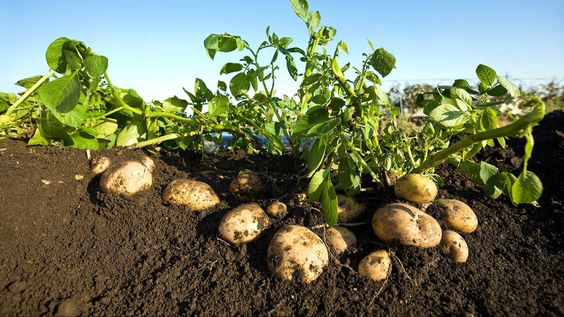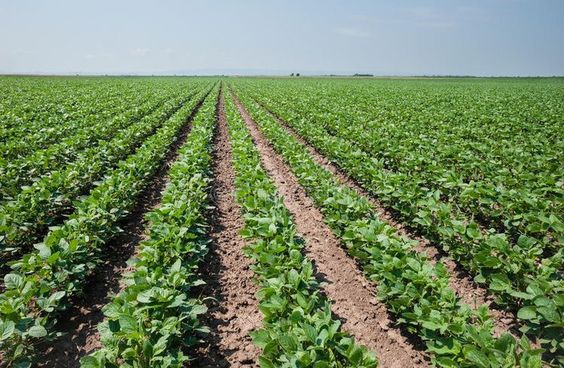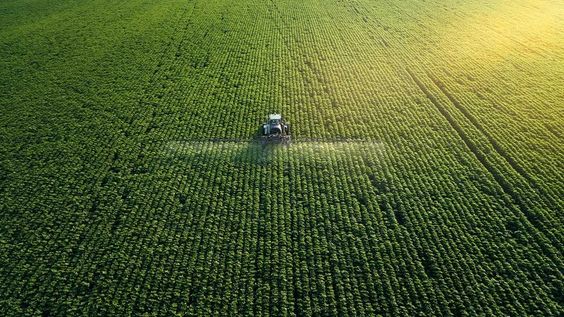Smart Agriculture and Potato Breeding: A New Era of Efficiency and Innovation
Potato Breeding,In the realm of modern agriculture, technology has become a critical enabler, transforming traditional practices into highly efficient and data-driven processes. One of the most promising intersections of technology and agriculture is found in the field of potato breeding. As the global population continues to grow, the demand for food increases, making the development of high-yielding, disease-resistant potato varieties essential. This is where smart agriculture comes into play, leveraging advanced technologies to enhance potato breeding processes. This article delves into the synergy between smart agriculture and potato breeding, exploring how innovative techniques and tools are revolutionizing the agricultural sector.
Contents
- 1 The Evolution of Potato Breeding
- 2 Key Technologies in Smart Agriculture for Potato Breeding
- 3 Benefits of Smart Agriculture in Potato Breeding
- 4 Objectives of Smart Agriculture in Potato Breeding
- 5 Explanation of Key Concepts
- 6 Usefulness of Smart Agriculture in Potato Breeding
- 7 Advantages of Smart Agriculture in Potato Breeding
- 8 Future Directions in Smart Agriculture and Potato Breeding
The Evolution of Potato Breeding
Potato breeding has come a long way from its early beginnings, evolving from traditional methods of selection and cross-breeding to advanced, technology-driven processes. Historically, potato breeding involved selecting the best-performing plants from each generation and cross-breeding them to produce new varieties. This method was labor-intensive and time-consuming, with results often taking several years to materialize.
The advent of modern technologies has revolutionized potato breeding, introducing new techniques that significantly accelerate the process. With the integration of smart agriculture technologies, breeders can now achieve faster and more precise results, leading to the development of high-quality potato varieties that meet the demands of today’s market.
Key Technologies in Smart Agriculture for Potato Breeding
1. Data Analytics and Machine Learning
Data analytics and machine learning are pivotal in modern potato breeding. These technologies enable the analysis of vast amounts of data collected from field trials, genetic studies, and environmental conditions. Machine learning algorithms can identify patterns and predict the performance of different potato varieties, allowing breeders to make informed decisions.
Case Study: Predictive Analytics in Potato Yield
A notable example of data analytics in action is the use of predictive analytics to forecast potato yields. By analyzing historical data on weather patterns, soil conditions, and crop performance, machine learning models can predict future yields with high accuracy. This information helps breeders make strategic decisions about which potato varieties to focus on and how to optimize growing conditions.
2. Remote Sensing
Remote sensing technology, including drones and satellites, provides real-time data on crop health, soil conditions, and environmental factors. This data is invaluable for monitoring the growth of potato crops, assessing the impact of various breeding techniques, and making adjustments as needed.
Application: Monitoring Crop Health with Drones
Drones equipped with multispectral cameras can capture high-resolution images of potato fields, providing detailed information on crop health. By analyzing these images, breeders can detect early signs of disease or nutrient deficiencies and take corrective actions before problems escalate.
3. Genomic Technologies
Genomic technologies, such as DNA sequencing and genome editing, have revolutionized potato breeding. By understanding the genetic makeup of potatoes, breeders can identify desirable traits and develop new varieties with enhanced characteristics, such as improved yield, resistance to diseases, and better nutritional value.
Advancement: CRISPR-Cas9 in Potato Breeding
The CRISPR-Cas9 genome editing technology allows breeders to make precise modifications to the potato genome. This technique enables the introduction of beneficial traits, such as enhanced disease resistance or improved tuber quality, with greater accuracy and efficiency compared to traditional breeding methods.
4. IoT and Precision Agriculture
The Internet of Things (IoT) enables the integration of sensors and smart devices in the agricultural field. In potato breeding, IoT sensors can monitor soil moisture, temperature, and nutrient levels, providing real-time data that helps optimize breeding practices and crop management.
Example: Soil Moisture Sensors
IoT-based soil moisture sensors provide continuous monitoring of soil moisture levels, allowing breeders to adjust irrigation practices and optimize water usage. This technology helps prevent overwatering or underwatering, leading to healthier potato plants and improved yields.
5. Artificial Intelligence (AI)
AI algorithms can analyze complex datasets and predict outcomes with high accuracy. In potato breeding, AI can be used to simulate various breeding scenarios, optimize genetic combinations, and accelerate the development of new potato varieties.
Implementation: AI-Driven Breeding Models
AI-driven breeding models can simulate different genetic combinations and predict their performance under various environmental conditions. This capability allows breeders to test numerous scenarios virtually, reducing the need for extensive field trials and speeding up the development process.
Benefits of Smart Agriculture in Potato Breeding
1. Increased Efficiency
Smart agriculture technologies streamline the potato breeding process, making it faster and more efficient. Data-driven decision-making and automation reduce the time and labor required for breeding, leading to quicker development of new varieties.
Efficiency in Breeding Cycles
By integrating data analytics and AI, breeders can optimize their breeding cycles, reducing the time needed to develop new potato varieties. This efficiency is particularly important in meeting the rapidly changing demands of the agricultural market.
2. Enhanced Precision
The use of data analytics and remote sensing allows for precise monitoring and management of potato crops. This precision helps breeders identify optimal growing conditions and make targeted improvements to their breeding programs.
Precision Agriculture Techniques
Precision agriculture techniques, such as variable rate fertilization and targeted pest management, help optimize resource use and minimize waste. By applying these techniques in potato breeding, breeders can achieve more accurate and effective results.
3. Improved Yield
By leveraging genomic technologies and AI, breeders can develop potato varieties with higher yields and better quality. This contributes to meeting the increasing global demand for potatoes and ensures food security.
Yield Optimization
Advanced breeding techniques enable the development of potato varieties with higher yield potential and improved tuber quality. This increased yield helps address the challenges of feeding a growing global population.
4. Disease and Pest Resistance
Smart agriculture technologies enable the identification of genetic traits associated with disease and pest resistance. Breeders can incorporate these traits into new potato varieties, reducing the reliance on chemical pesticides and enhancing crop resilience.
Resistance to Key Pests
By developing potato varieties with enhanced resistance to key pests, such as the Colorado potato beetle and aphids, breeders can reduce the need for chemical interventions and support more sustainable pest management practices.
5. Sustainability
The integration of smart agriculture practices promotes sustainable farming by optimizing resource use and reducing environmental impact. Precision agriculture techniques help minimize water and fertilizer usage, contributing to more sustainable potato production.
Sustainable Farming Practices
Sustainable farming practices, such as reduced tillage and cover cropping, complement smart agriculture technologies by improving soil health and reducing erosion. These practices support long-term sustainability in potato production.

Objectives of Smart Agriculture in Potato Breeding
1. Development of High-Yielding Varieties
One of the primary objectives is to create potato varieties with significantly higher yields compared to traditional varieties. This helps increase food production and meet the growing demands of a burgeoning global population.
Targeted Yield Improvement
Breeding programs focus on developing varieties with specific yield targets, based on factors such as soil type, climate, and market preferences. This targeted approach ensures that new varieties meet the needs of diverse agricultural environments.
2. Disease and Pest Management
Another key objective is to develop potato varieties with enhanced resistance to diseases and pests. This reduces the need for chemical interventions and supports sustainable agricultural practices.
Integrated Pest Management
Integrated pest management (IPM) strategies, combined with disease-resistant varieties, help minimize the impact of pests and diseases on potato crops. This approach reduces reliance on chemical controls and promotes ecological balance.
3. Nutritional Improvement
Enhancing the nutritional profile of potatoes is an important objective. By incorporating specific genes related to nutritional content, breeders can develop varieties with higher levels of essential vitamins and minerals.
Nutrient-Enriched Varieties
Developing potato varieties with increased levels of nutrients, such as vitamin C and potassium, addresses public health concerns related to micronutrient deficiencies. These nutrient-enriched varieties offer greater health benefits to consumers.
4. Adaptation to Climate Change
Smart agriculture aims to develop potato varieties that can withstand changing climatic conditions. By identifying and incorporating traits that confer resilience to drought, heat, and other environmental stresses, breeders can ensure that potato crops remain productive in varying climates.
Climate-Resilient Varieties
Breeding programs focus on developing varieties with traits such as drought tolerance and heat resistance, allowing potatoes to thrive in changing climate conditions. This adaptation helps maintain stable production levels despite environmental challenges.
5. Efficiency in Breeding Processes
The ultimate goal is to make potato breeding processes more efficient and cost-effective. By utilizing advanced technologies, breeders can accelerate the development of new varieties and reduce the time and resources required for breeding programs.
Cost-Effective Breeding
Smart agriculture technologies help reduce the costs associated with breeding programs by automating tasks, optimizing resource use, and improving decision-making. This cost-effectiveness makes breeding more accessible and sustainable.
Explanation of Key Concepts
Data Analytics
Definition and Application
Data analytics involves the collection and analysis of data to uncover patterns and insights. In potato breeding, data analytics helps breeders understand factors influencing crop performance, such as genetic traits, environmental conditions, and management practices.
Tools and Techniques
Tools such as statistical software, data visualization platforms, and machine learning algorithms are used to analyze breeding data. These tools provide valuable insights that guide decision-making and improve breeding outcomes.
Remote Sensing
Technology Overview
Remote sensing technology involves the use of sensors and imaging devices to collect data from a distance. In potato breeding, remote sensing provides information on crop health, soil conditions, and environmental factors, enabling precise monitoring and management.
Benefits and Applications
Remote sensing benefits include early detection of crop issues, efficient monitoring of large areas, and real-time data for decision-making. Applications include disease detection, nutrient management, and yield prediction.
Genomic Technologies
Genomic Sequencing
Genomic sequencing involves determining the DNA sequence of an organism’s genome. In potato breeding, genomic sequencing provides detailed information on genetic variation, allowing breeders to identify and select traits associated with desirable characteristics.
Genome Editing
Genome editing technologies, such as CRISPR-Cas9, enable precise modifications to the DNA sequence. This technique allows breeders to introduce specific traits, such as disease resistance or improved quality, with high accuracy.
IoT and Precision Agriculture
IoT Sensors
IoT sensors are devices that collect and transmit data from agricultural fields. In potato breeding, IoT sensors monitor parameters such as soil moisture, temperature, and nutrient levels, providing real-time insights that optimize breeding and crop management.
Precision Agriculture Techniques
Precision agriculture involves using data-driven approaches to manage crops and resources efficiently. Techniques include variable rate application of fertilizers and pesticides, targeted irrigation, and spatial mapping of crop conditions.
Artificial Intelligence (AI)
AI Algorithms
AI algorithms analyze complex datasets to identify patterns, make predictions, and optimize outcomes. In potato breeding, AI algorithms can simulate breeding scenarios, predict genetic performance, and accelerate the development of new varieties.
Applications in Breeding
AI applications include predictive modeling, genetic optimization, and decision support systems. These applications enhance the efficiency and accuracy of breeding programs, leading to better results and faster development.
Usefulness of Smart Agriculture in Potato Breeding
1. Faster Breeding Cycles
Advanced technologies reduce the time required to develop new potato varieties, allowing breeders to respond quickly to changing market demands and environmental conditions.
Accelerated Development
By streamlining the breeding process and using data-driven insights, breeders can accelerate the development of new varieties. This speed is crucial for addressing urgent needs and adapting to new challenges.
2. Better Data-Driven Decisions
The integration of data analytics and AI enables breeders to make more informed decisions, leading to more successful breeding outcomes and higher-quality potato varieties.
Informed Decision-Making
Data-driven decision-making allows breeders to optimize their breeding strategies, select the best candidates, and improve overall breeding success. This approach enhances the effectiveness of breeding programs.
3. Cost Savings
By optimizing breeding processes and reducing the need for manual labor, smart agriculture technologies can lower the costs associated with potato breeding.
Cost Reduction
Smart agriculture technologies help reduce costs by automating tasks, optimizing resource use, and minimizing trial and error. These cost savings make breeding programs more sustainable and accessible.
4. Increased Sustainability
Smart agriculture practices promote sustainable farming by minimizing resource use and reducing the environmental impact of potato production.
Resource Optimization
Sustainable practices, such as precision irrigation and reduced chemical use, contribute to the efficient use of resources and lower environmental impact. This focus on sustainability supports long-term agricultural health.
5. Enhanced Crop Quality
The use of genomic technologies and AI helps develop potato varieties with improved nutritional content, better taste, and higher yields, benefiting both consumers and producers.
Quality Improvement
Enhanced crop quality results from advancements in breeding techniques, leading to potatoes with better taste, texture, and nutritional value. This improvement benefits consumers and adds value to potato production.

Advantages of Smart Agriculture in Potato Breeding
1. Innovation and Progress
Smart agriculture drives innovation in potato breeding, leading to the development of cutting-edge techniques and technologies that push the boundaries of traditional breeding methods.
Technological Advancements
Innovation in potato breeding includes new breeding techniques, advanced tools, and improved practices. These advancements contribute to the overall progress of the agricultural sector.
2. Precision and Accuracy
The precision offered by smart agriculture technologies ensures that breeding practices are tailored to specific conditions and requirements, resulting in more effective and targeted outcomes.
Targeted Approaches
Precision agriculture techniques allow for targeted interventions and adjustments, improving the accuracy of breeding programs and enhancing the effectiveness of crop management practices.
3. Scalability
Smart agriculture technologies are scalable and can be applied to various breeding programs, making them suitable for both small-scale and large-scale potato production.
Adaptable Solutions
Scalable technologies can be customized to suit different breeding programs, allowing for flexibility and adaptability in various agricultural contexts. This scalability supports diverse breeding efforts.
4. Enhanced Collaboration
The use of data sharing and collaborative platforms enables breeders, researchers, and farmers to work together more effectively, sharing insights and best practices to advance potato breeding efforts.
Collaborative Networks
Collaborative platforms and data sharing facilitate communication and cooperation among stakeholders. This enhanced collaboration leads to improved breeding outcomes and the advancement of collective knowledge.
5. Global Impact
The advancements in potato breeding driven by smart agriculture have the potential to impact global food security, improve livelihoods, and contribute to sustainable agricultural practices worldwide.
Global Benefits
Smart agriculture technologies contribute to global food security by increasing crop yields, improving quality, and promoting sustainability. These benefits have far-reaching implications for communities and agricultural practices worldwide.
Future Directions in Smart Agriculture and Potato Breeding
As technology continues to evolve, the future of smart agriculture and potato breeding holds exciting possibilities. Innovations in areas such as artificial intelligence, genomics, and precision agriculture will further enhance breeding practices and contribute to the development of new potato varieties.
1. Integration of Advanced Genomic Tools
Future advancements in genomic tools, such as next-generation sequencing and high-throughput genotyping, will provide even more detailed insights into potato genetics. These tools will enable breeders to identify and incorporate desirable traits with greater precision.
2. Expansion of AI Applications
AI applications in potato breeding will become increasingly sophisticated, offering more accurate predictions, simulations, and optimizations. These advancements will further accelerate the development of new varieties and improve breeding outcomes.
3. Development of Climate-Resilient Varieties
The ongoing challenges of climate change will drive the development of potato varieties with enhanced resilience to environmental stresses. Future breeding efforts will focus on creating varieties that can thrive in diverse and changing climates.
4. Increased Focus on Sustainability
Sustainability will remain a key focus in potato breeding, with an emphasis on reducing environmental impact, optimizing resource use, and promoting sustainable farming practices. Future advancements will support the development of eco-friendly breeding techniques.
5. Global Collaboration and Knowledge Sharing
Global collaboration and knowledge sharing will play a crucial role in advancing potato breeding efforts. International partnerships and collaborative research will drive innovation and ensure that advancements in breeding practices benefit communities worldwide.
The integration of smart agriculture technologies into potato breeding represents a significant advancement in the agricultural sector. By harnessing the power of data analytics, remote sensing, genomic technologies, IoT, and AI, breeders can develop new potato varieties with improved yields, disease resistance, and nutritional content. These technologies not only enhance the efficiency and effectiveness of breeding programs but also contribute to more sustainable and environmentally friendly agricultural practices.




